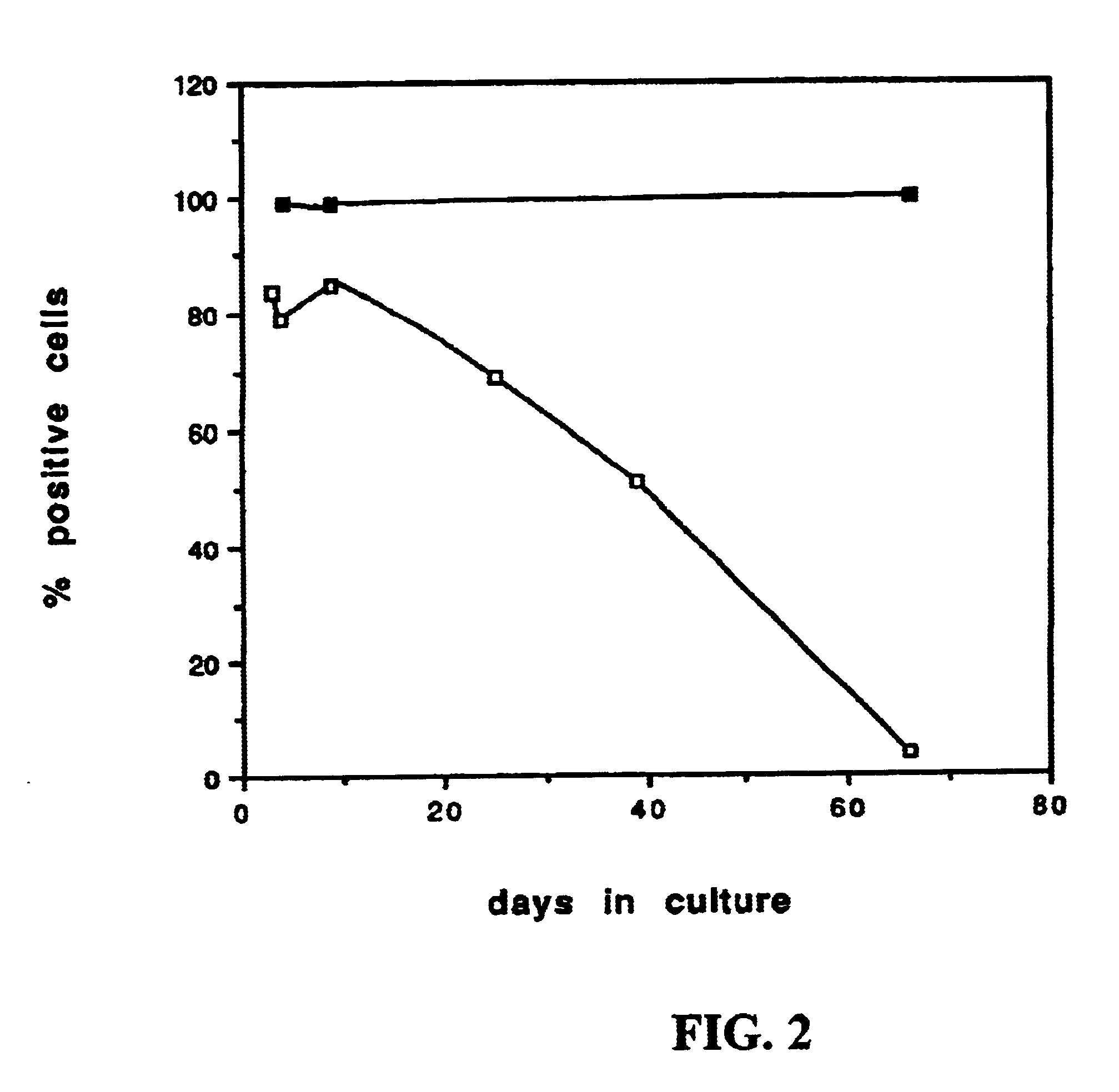Method for producing preparations of mature and immature pancreatic endocrine cells, the cell preparation and its use for treatment of diabetes mellitus
a technology of pancreatic endocrine cells and cell preparations, which is applied in the field of producing preparations of mature and immature pancreatic endocrine cells, the cell preparation and its use for treating diabetes mellitus, can solve the problems of metabolic disturbance, current treatment fails to achieve a complete normalization of glucose homeostasis, and diabetic patients face the risk of developing chronic complications
- Summary
- Abstract
- Description
- Claims
- Application Information
AI Technical Summary
Benefits of technology
Problems solved by technology
Method used
Image
Examples
example i
Mass Isolation and Purification of Fetal Porcine Pancreatic Cells
Pregnant sows of 108 to 114 days of gestation were anaestethized and the fetuses removed surgically under sterile conditions in an operating theatre, the fetuses (crown-rump length 28.+-.5 cm (mean.+-.SD)) were decapitated and the pancreases removed by dissection under aseptic conditions and collected into sterile isolation medium (Pipeleers et al, Endocrinology 117:806-816, 1985). Over the past 100 dissections, a mean of nine fetuses were collected per pregnant sow. The tissue was cut with scissors into small fragments of approximately 1 mm.sup.3 in size.
After washing the tissue fragments with isolation medium, the fragments were suspended in 200 ml isolation medium with 0.3 mg / ml collagense-P (Roche) (room temperature) and then shaken for 15 minutes. The tissue digest was filtered through a 500 .mu.m filter and the filtrate centrifuged through a solution with density of 1.040 (6' at 1500 rpm) after which the pellet w...
example ii
Use of fluorescence-activated cell sorting (FACS) to further enrich the preparations in immature or mature endocrine cells, in particular beta cells.
1) Purification of immature cell preparations which are predominantly composed of non-granulated cells and which contain immature endocrine cells.
Starting preparation:
elutriation-fraction 15 .mu.m
cultured for 4 days in HAM's F10 medium used for immature cells and supplemented with 2% newborn calf serum and CaCl.sub.2 up to final 2 mM concentration.
dissociated in calcium-free medium containing trypsin and DNase.
composition: non-granulated cells >40%; endocrine cells 35-50%.
FACS conditions:
analysis for sidewards scatter (SSC) and for fluorescence at excitation 488 nm, emission 520-540 nm (FL1)
Sorting of R1, R2 and R3 windows (FIG. 3a)
cellular composition of the fractions obtained: R1+R2 contain >70% non-granulated cells, with a higher fluorescence in the R2 population as a marker for immature endocrine cells
R3 contains >85% endocrine cell...
example iii
Fetal pig derived beta cells produce insulin at rate that is comparable to that in adult human beta cells.
Endocrine cell preparations as obtained in example I are collected from the culture dishes and washed in isolation medium. A fluorescence toxicity assay (Hoorens et al, J Clin Invest 98, 1568-1574, 1996) indicates less than 15% dead cells. Samples of 25.000 to 75.000 cells are incubated in 500 .mu.m HAM's F10 medium supplemented with 0.5% bovine serum albumin and 25 .mu.Ci .sup.3 H-tyrosine (5 .mu.M final concentration). Labeling of newly synthesized proteins is conducted over 120 min at 37.degree. C. and 95% O2 / 5% CO.sub.2 Total protein and proinsulin synthesis are measured as previously described (Ling and Pipeleers, Endocrinology 134, 2614-2621, 1994). Date are expressed per 1000 beta cells. At 10 mM glucose the rates of insulin biosynthesis (41.+-.3 fmol per 10.sup.3 beta cells per 2 hrs) are comparable to those in adult human beta cells (37.+-.8 fmol per 10.sup.3 beta cells...
PUM
| Property | Measurement | Unit |
|---|---|---|
| size | aaaaa | aaaaa |
| sizes | aaaaa | aaaaa |
| size | aaaaa | aaaaa |
Abstract
Description
Claims
Application Information
 Login to View More
Login to View More - R&D
- Intellectual Property
- Life Sciences
- Materials
- Tech Scout
- Unparalleled Data Quality
- Higher Quality Content
- 60% Fewer Hallucinations
Browse by: Latest US Patents, China's latest patents, Technical Efficacy Thesaurus, Application Domain, Technology Topic, Popular Technical Reports.
© 2025 PatSnap. All rights reserved.Legal|Privacy policy|Modern Slavery Act Transparency Statement|Sitemap|About US| Contact US: help@patsnap.com



